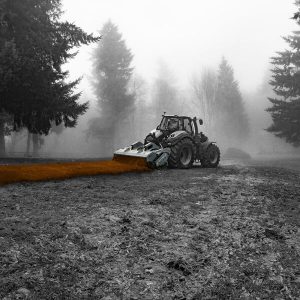Teenage Drivers – 5 Significant Risks Every Parent Should Know

If you thought that sleepless nights were behind you once the 2:00 am feeding sessions stopped, think again! Because the minute your 16-year old gets a driving license, all those sleepless nights are going to be back in a big way. And, you do have cause for concern. According to statistics released by the Insurance Institute for Highway Safety, 16 to 20-year old teenage drivers are 3 times more likely to get into a car accident than drivers above the age of 20. Even if your child is not driving, know that 76% of the fatalities of crashes involve passengers in the car.
While you do need to watch over the activities of teenage drivers in your home, you may also want to keep track of their whereabouts as a responsible parent when they’re out in their cars. Thankfully, you can buy several devices compatible with your Android, Apple, and Windows phones that will give you the exact location of your child. One such example is the car tracker device from GoFind Inc. You can place this compact device in a discreet spot in the car so you can monitor its movements with accuracy.
Taking the necessary steps to keep your child safe are essential, however you also need to educate yourself on the most important risk factors that can endanger young drivers and warn them carefully. Here are a few lessons you absolutely must inculcate in your kids.
1 – Concentrate on the Road and Avoid Distractions
As with all drivers, audio, visual, cognitive, and manual distractions are a common problem and can lead to mishaps.
- Audio hindrances can come from playing loud music in the car or worse, wearing headphones when driving
- Visual diversions include taking eyes off the road to check cellphones and messages
- Manual distractions include texting and managing the wheel at the same time.
- Cognitive interruption in concentration can result from animated conversations, laughing, and talking with passengers or thinking of other things.
Distractions prove to be especially disastrous in the case of teenage drivers because of their longer response times. Add to that is their compulsive need to remain in touch with friends via cellphone apps adds a dangerous element to the mix. Encourage your kids to refrain from using their phones when driving and that it is perfectly reasonable to call back later or pull over if they need to take an important call or return a message. Getting a passenger to take care of answering calls and texts is also a smart (and, safe!) solution.
2 – Never Drink and Drive
Did you know that statistics released by the Centers for Disease Control and Prevention reveal that at least 17% of teenagers are more likely to get involved in alcohol-related car mishaps? Not only do young bodies process alcohol less efficiently, but drinking impairs their brain more seriously than it affects adults. The combination of alcohol with driving is more lethal since teenage drivers are as yet inexperienced and not able to make the right decisions in spilt seconds. Advise your kids to have a designated, sober friend to drive home after parties. Better yet, offer to pick them up or insist that they take a cab.
3 – Get Adequate Sleep
All adults are likely to fall asleep at the wheel in case they sacrifice sleep for digital time, socializing, studying, working and various other activities. But, as this feature on The British Psychological Society explains, around 16% of all teenage car mishaps result from insufficient sleep. Experts outline 2 key factors that explain teenagers’ sleeping and waking patterns that can influence their alertness when driving, namely, the homeostatic and circadian cycles. The homeostatic cycle is universal and can make anyone drowsy if they haven’t slept for an extended period of time. Teenagers, on the other hand, also have circadian cycles different from adults. And, this pattern may stabilize completely only at a later age. For this reason, insufficient sleep can put teenage drivers at a higher risk than more mature motorists.
4 – Check the Peripheries of the Road
One of the most critical errors young drivers make when on the road is to fail to watch for objects on the sides of the road that can act as potential hazards. When teaching your kids how to drive, teach them to keep a close watch on the sides of the road and be extremely watchful of crossroads. Warn them that around 21% of accidents occur because of unexpected dangers emerging from peripheral areas that less-experienced drivers are not equipped to handle. And, that’s a fact corroborated by the Insurance Journal.
5 – Other Possible Risks to Keep in Mind
Aside from the risks listed above, here are a few more lessons to teach your kids and teenage drivers.
- Do drive within speeding limits and slow down at curves and bends in the road.
- Don’t fall for dares and challenges from peers.
- Don’t seat too many passengers and make sure every person in the car is wearing a seatbelt.
- Do opt for public means of transport when weather conditions are bad like, for instance, rain, snow, storms, cloudy conditions, or sleet that can make roads slippery and blur vision.
- Do keep vehicles maintained with regular tuning and checks. Avoid the possibility of malfunctions that can result in mishaps on the road.
Raising teenagers and keeping them out of trouble is a tough job for parents by itself. But, add a set of car keys and you’ll see the problem compounded many times over. Even as you’re waiting anxiously for your kids to get home safely, you may want to pinpoint their locations and make sure they’re okay. In place of calling and risking a mishap when your child picks up the phone, you could rely on other gadgets. Look around the market for tracking and hands free devices and use them along with safety instructions that you must reinforce from time to time. Be the responsible parents and keep your kids safe.






